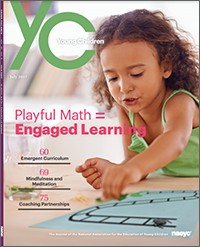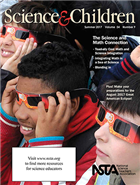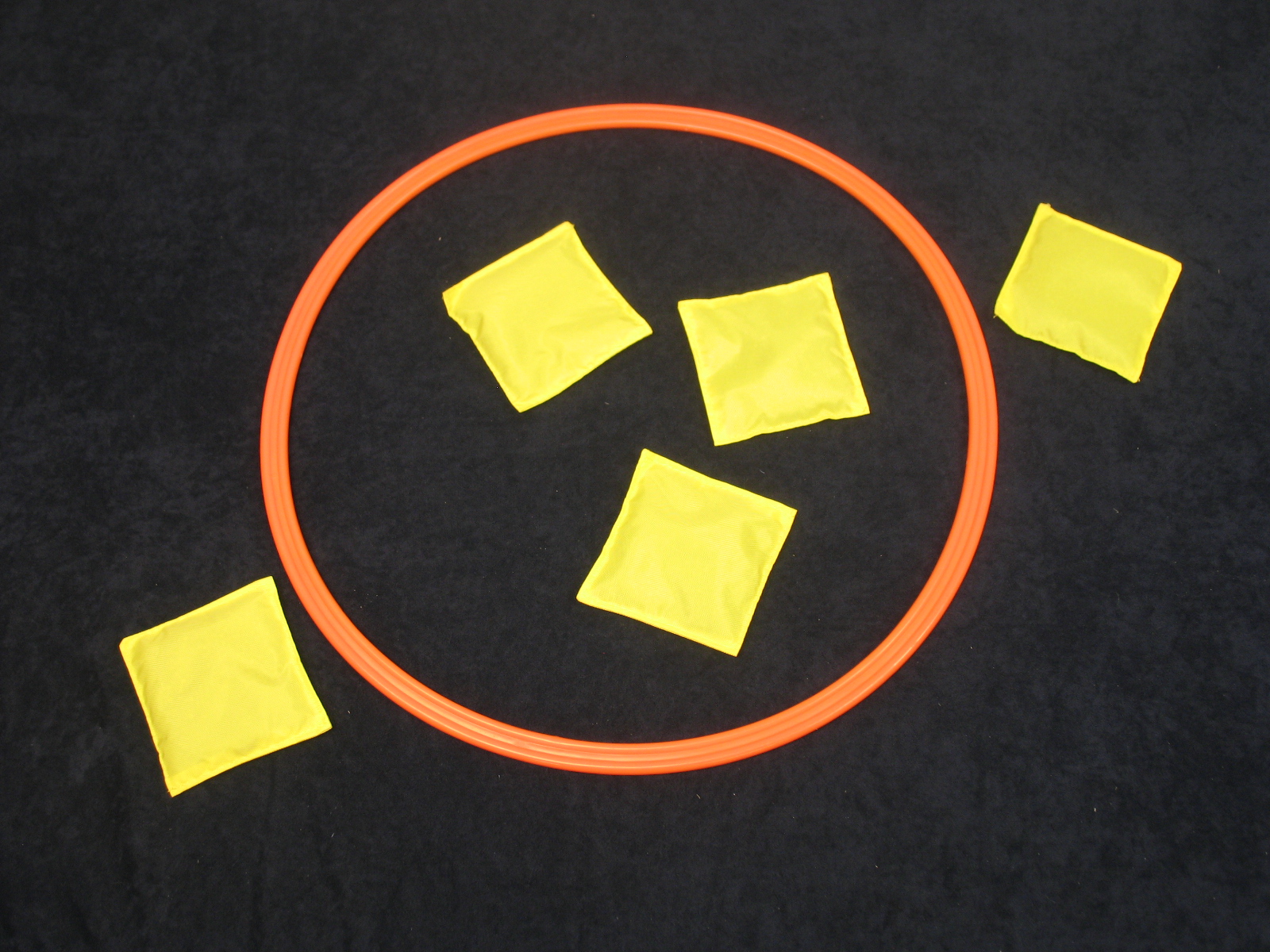Math is integral to early childhood STEM learning
By Peggy Ashbrook
Posted on 2017-07-19

 July has brought my happy place (where the worlds of early childhood education and science education overlap) to my mailbox in the form of the 2017 summer journals from the National Science Teachers Association (NSTA) and the National Association for the Education of Young Children (NAEYC): Science and Children and Young Children. Both issues of these journals focus on math and the resources are such good reading in preparation for teaching! NAEYC’s Teaching Young Children (TYC) also has resources about early math.
July has brought my happy place (where the worlds of early childhood education and science education overlap) to my mailbox in the form of the 2017 summer journals from the National Science Teachers Association (NSTA) and the National Association for the Education of Young Children (NAEYC): Science and Children and Young Children. Both issues of these journals focus on math and the resources are such good reading in preparation for teaching! NAEYC’s Teaching Young Children (TYC) also has resources about early math.
A friend who is a former early childhood educator was telling me about her grandchild, sharing how smart he is because at 2 years old he can count to 25. Knowing her and her daughters, I have no doubt her grandchild will grow up to be a deep thinker, capable of many achievements and contributions to society but she and I both know his ability to recite numbers in order does not reveal the depth of his understanding of the meaning of numbers.
When parents, grandparents, and other educators share their excitement about children’s achievements we can cheer and offer resources that support both the children’s learning and the adult’s learning about how children learn. I might say, “Wow, counting to 25! Here are some resources on early math development you may enjoy or already know about.”
I’m using these resources to help me understand what children may know and be able to do at ages of 2-5. Add your favorite resources in a comment to help me learn more.
The National Council of Teachers of Mathematics’ (NCTM) October 2013 position statement, “Mathematics in Early Childhood Learning” states, “The big ideas in mathematics must include mathematical experiences that incorporate mathematics content in areas such as number and operations, geometry, algebraic reasoning, and measurement,” and, “Early childhood educators should actively introduce mathematical concepts, methods, and language through a variety of appropriate experiences and research-based teaching strategies.”
The NCTM Principles and Standards for School Mathematics has both content and process standards, defined in grade bands beginning with PreK-2. For example, part of the preK-2 expectations in content standard “Number and Operations” states, “In pre-K through grade 2 each and every student should- count with understanding and recognize “how many” in sets of objects.” And a PreK-2 expectation in content standard “Understand patterns, relations, and functions” states, “In pre-K through grade 2 each and every student should– sort, classify, and order objects by size, number, and other properties;
 Playing games is a time-tested and fun way to include math skill building in early childhood programs.
Playing games is a time-tested and fun way to include math skill building in early childhood programs.
Regents’ Center for Early Developmental Education’s Games page, developed in collaboration with Dr. Constance Kamii of the University of Alabama at Birmingham. The Head Start and the Common Core Standards are listed for each game, with clear photos and instructions and illustrations to download.
Next Generation Preschool Math, a project of Education Development Center’s (EDC) Center for Children and Technology, SRI International, and First 8 Studios at WGBH led to the development of a curriculum that includes eight tablet apps that are games that can be played individually or collaboratively and classroom activities. A teacher’s guide (http://first8studios.org/gracieandfriends/guide/) includes “The Basics” (defining the units subitizing and equipartition and explaining why they are important) and lesson plans for engaging children with these concepts through both digital and traditional classroom activities.
 EDC’s Games for Young Mathematicians project researches the use of games to foster early mathematical learning in preschool settings. See their list of suggestions for published math picture books.
EDC’s Games for Young Mathematicians project researches the use of games to foster early mathematical learning in preschool settings. See their list of suggestions for published math picture books.
The Erikson Institute Early Math Collaborative’s video series, Focus on Play, illustrates how educator care givers can help infants and toddlers explore precursor concepts of math, “concepts that anchor a child’s mathematical thinking and are essential for the growth of further mathematics.”  See descriptions of the “Big Ideas of Early Mathematics” from The Early Math Collaborative’s book, Big Ideas of Early Mathematics and follow the links to learn more about each idea in written descriptions and Focus on the Child video clips from one-on-one interviews with individual children that reveal children’s thinking. It’s interesting to see how, after asking a question, the teachers and researchers wait for a relatively long time for children to answer.
See descriptions of the “Big Ideas of Early Mathematics” from The Early Math Collaborative’s book, Big Ideas of Early Mathematics and follow the links to learn more about each idea in written descriptions and Focus on the Child video clips from one-on-one interviews with individual children that reveal children’s thinking. It’s interesting to see how, after asking a question, the teachers and researchers wait for a relatively long time for children to answer.
 Dr. Doug Clements and Dr. Julie Sarama, professors at the University of Denver, shared their work in a free webinar, “The Path for Math in Early Childhood: The Learning Trajectories Perspective” (June 15, 2016 Early Childhood Investigations). These learning trajectories include three components: “the mathematical goals, developmental progressions of children’s learning, and educational activities and teaching strategies (based on finding the mathematics in, and developing mathematics from, children’s everyday activity).” Read more of their work, “Math in the Early Years: A Strong Predictor for Later School Success,” in The Education of the States’ October 2013 newsletter. http://www.earlychildhoodwebinars.com/wp-content/uploads/2016/04/Math-in-the-Early-Years.pdf
Dr. Doug Clements and Dr. Julie Sarama, professors at the University of Denver, shared their work in a free webinar, “The Path for Math in Early Childhood: The Learning Trajectories Perspective” (June 15, 2016 Early Childhood Investigations). These learning trajectories include three components: “the mathematical goals, developmental progressions of children’s learning, and educational activities and teaching strategies (based on finding the mathematics in, and developing mathematics from, children’s everyday activity).” Read more of their work, “Math in the Early Years: A Strong Predictor for Later School Success,” in The Education of the States’ October 2013 newsletter. http://www.earlychildhoodwebinars.com/wp-content/uploads/2016/04/Math-in-the-Early-Years.pdf
Will you add to the number of resources listed here? What early math resource makes sense to you?
Disclaimer: The views expressed in this blog post are those of the author(s) and do not necessarily reflect the official position of the National Science Teaching Association (NSTA).


